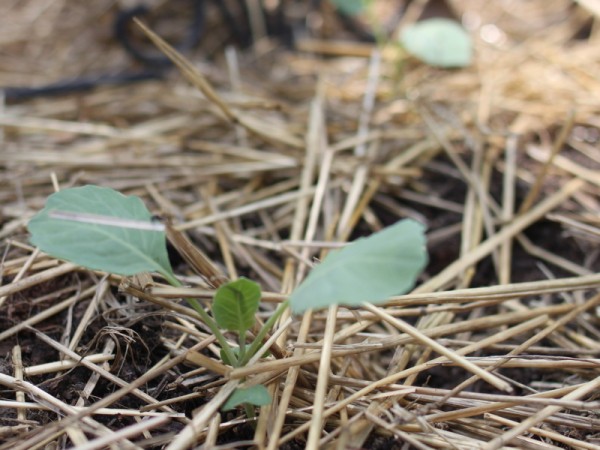Just when tomatoes are coming in by the tons and weeds seem overwhelming, there's one more little task to add to your list of gardening tasks - fall planting. For us, autumn planting is a nice break from the harvest season, a re-commitment to eating fresh from the yard even as temperatures cool. Sowing seeds and seedlings now will give you a crop to eat through the autumn and early winter while preventing soil erosion and nutrient loss.
First, Save Seeds
Before you rip out tomatoes, squash, or peppers, be sure to save seeds from the best fruits. Seed saving should always be in the back of your mind to preserve biodiversity, ensure varieties are adapted to your local conditions, and save cash. Read my seed saving guide published a couple years ago for the basics or the Adaptive Seeds Guide for more detailed information.
Plant Autumn-Sown Garlic, Perennials, Fruits
Several edibles want to be planted at this time of year. Garlic is the most well-know crop that must be planted in the fall. Put yours in the ground before mid October and let it over-winter. You may see sprouts in the fall and that’s ok. They’ll survive snow and ice and shoot up again in the spring.
Fall is a great time to plant many flower bulbs and transplant berries or fruit trees too. Split your own plantings first - strawberry runners, raspberry shoots, herbs, and perennial flowers can all be transplanted in the fall. Often you can find perennials and fruits in the clearance section of your local nursery. It's best to split and transplant in mild weather, but if you run into a hot spell, just water often.
Plant Leafy Greens, Roots, and Cabbages
In Ohio, we can grow greens, many root vegetables, and members of the cabbage family in the fall. Planted now, these germinate quickly and tolerate cold temperatures as they mature.
Prepare the beds in which you wish to sow fall crops by lightly turning the soil and adding compost or an organic, mild fertilizer. Baby the seeds and seedlings when they are young, as hot dry days can scorch them. We use straw mulch to prevent weed growth and hold in moisture.
Below is a chart of fall crop dates in central Ohio; be mindful that if you plant seedlings, have a warm microclimate, use season extension, or autumn is mild, you may plant a few weeks beyond these dates.
|
Variety |
Planting Date |
Days To Harvest |
Notes |
|
arugula |
8/20 |
30 |
|
|
asian greens |
7/15 |
45-50 |
|
|
beets |
7/30 |
50-60 |
|
|
broccoli |
7/15 |
70-90 |
best started indoors |
|
cabbage |
7/15 |
60-75 |
best started indoors |
|
carrots |
7/30 |
60-90 |
sweetens after frost |
|
cauliflower |
8/5 |
60-85 |
best started indoors |
|
collards |
8/5 |
60-80 |
|
|
endive |
8/20 |
35 |
|
|
kale |
7/30 |
60 |
sweetens in cool temps |
|
kohlrabi |
8/15 |
55-70 |
|
|
lettuce |
8/20 |
45-70 |
|
|
radish |
9/15 |
35-60 |
|
|
rutabaga |
7/30 |
90-100 |
sweetens after a frost |
|
spinach |
8/20 |
40-60 |
|
|
swiss chard |
7/30 |
50-60 |
|
|
turnip |
8/10 |
45-60 |
sweetens after a frost |
When Winter Weather Comes
Cold temperatures are not the enemy of fall crops and indeed make some sweeter. There are also simple season extension techniques like row covers and low tunnels to keep plants from succumbing to frost die-off. I'll write about these soon.
Mulch At A Minimum
At the very least, protect your vegetable beds by mulching in the fall with straw or leaf litter. Mulch holds in nutrients, prevents erosion, and helps keep weeds at bay. In the spring, rake off the mulch and begin planting!
What are you planting now?
NB. Swainway Urban Farm fall seedlings, like the cabbage pictured above, are available at City Folk's Farm Shop and the Clintonville Farmers' Market for the next few weeks or until supplies run out. If you buy at the market, say hi to me!

